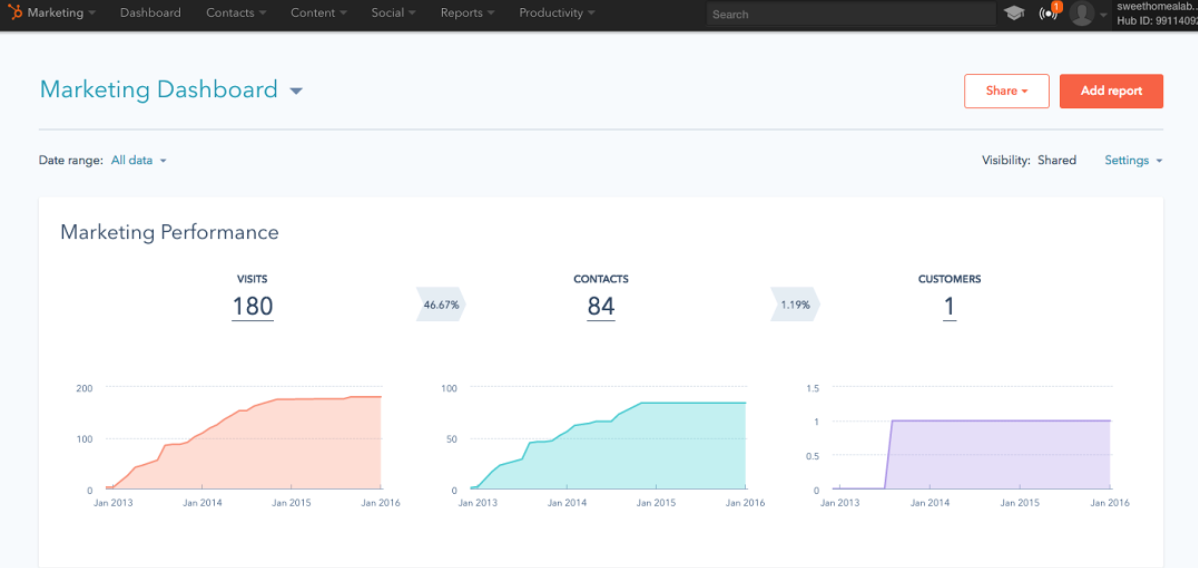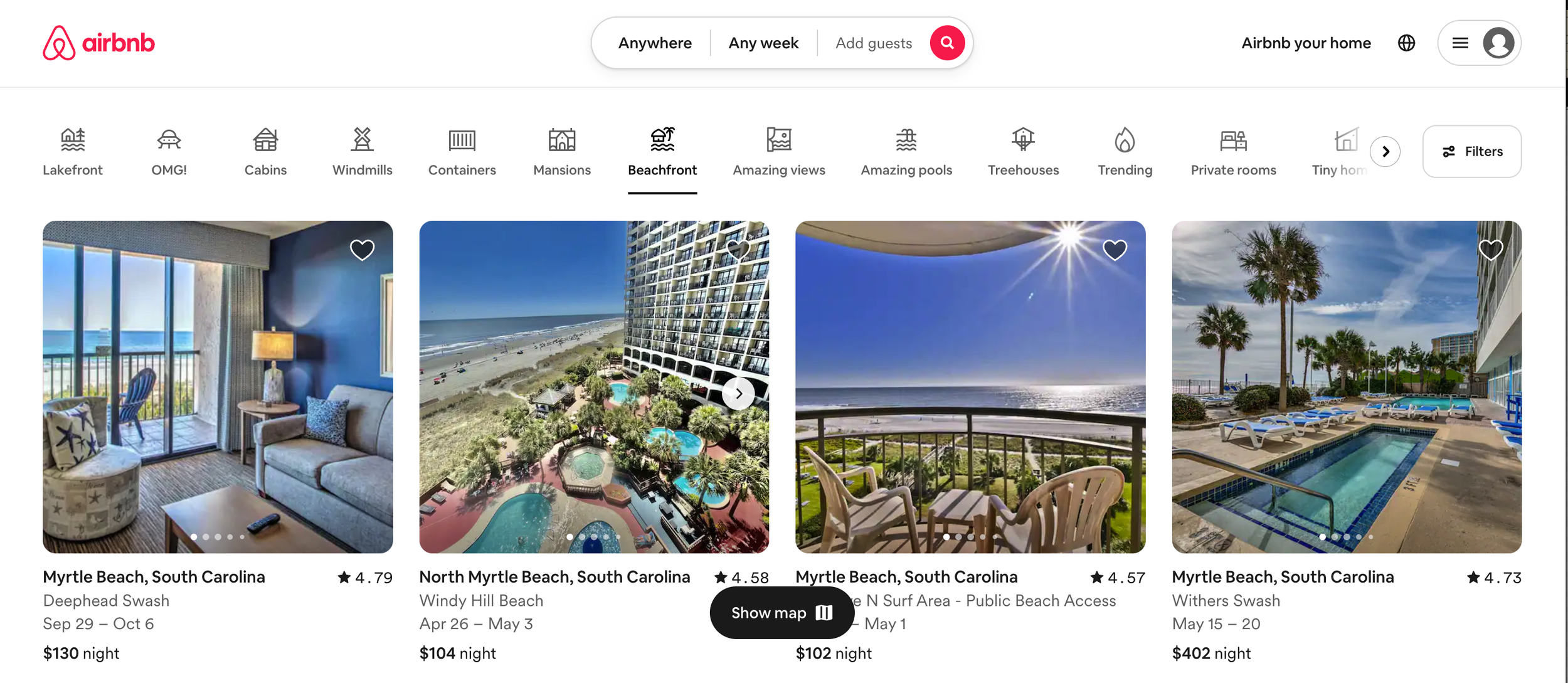UX Design 101: Why UX Matters When it Comes to Your Website
When it comes to design, did you know there are guiding principles that tell us the difference between good and bad design?
User experience design, or UX design, refers to the process of creating digital products, such as websites and mobile apps, that are easy to use, engaging, and accessible. The goal of UX design is to make sure that users can interact with your website or app in a way that is intuitive, enjoyable, and efficient.
The goal of UX design is to make sure that users can interact with your website or app in a way that is intuitive, enjoyable, and efficient.
UX design involves many different elements, including visual design, information architecture, interaction design, usability, and accessibility. The designer will consider factors such as the target audience, the user's goals and needs, and the context in which the product will be used.
So why is UX design important for your website? A well-designed website with good UX can have many benefits, including:
1. Improved User Experience
When users can easily navigate and find what they're looking for on a website, it can greatly enhance their overall experience. If a user is able to complete their tasks quickly and efficiently, they are more likely to be satisfied with the website and may even return in the future. This is because a positive user experience can leave a lasting impression and influence a user's perception of the website's credibility and usefulness.
On the other hand, if a user is faced with a confusing or cluttered website, they may become frustrated and leave without completing their intended tasks. Therefore, it is important to prioritize user experience and make it easy for users to find what they need.
Apple’s main navigation menu is sleek and simple. This is an example of a good user experience that is simple and easy to navigate.
2. Increased Engagement
A well-designed website with a great user experience can lead to increased engagement from users. When a user finds a website easy to use and navigate, they are more likely to spend more time on the site and engage with the content. This could involve listening to podcasts, reading blog posts, watching videos, or interacting with quizzes or surveys.
If a user finds the content valuable or entertaining, they may be more likely to share it with their friends and followers on social media. This can result in increased traffic to the website and potentially even new customers. By focusing on providing a positive user experience, website owners can increase engagement and ultimately drive success for their business or organization.
Spotify is a great example of an app that used UX to build more engagement on their app. The app learns your music tastes then introduces you to new music based on your preferences. The design of Spotify is intuitive and makes you want to spend more time in the app. Plus, at the end of the year, Spotify takes your music data (which should be creepy), but they present all your data to you in a fun way.
Spotify is an app that so many people love because it’s designed to make it easier for you to find the music you love and explore new artists.
3. Deeper Insight into Buyer Personas
UX designers can also play a crucial role in developing and refining buyer personas. By gathering data on user behavior and preferences through tools such as user surveys and analytics, UX designers can gain deeper insights into the motivations and needs of their target audience. This information can be used to refine and develop buyer personas that accurately reflect the target audience and their behavior.
By understanding the buyer personas better, UX designers can create solutions that meet the needs of the target audience more effectively, leading to higher engagement and ultimately, more conversions. This collaboration between marketing and UX design can result in a more effective and user-centered approach to designing websites and other digital products. Download our buyer persona workbook for more information on buyer personas.
Buyer personas help UX designers create websites and apps that meet the needs of the target audience more effectively, leading to higher engagement and ultimately, more conversions.
4. Improved Conversion Rates
One of the key benefits of a well-designed website is improved conversion rates. When users find a website easy to use and navigate, they are more likely to take desired actions such as filling out a form, making a purchase, or signing up for a newsletter. By simplifying the user journey and making it easy for users to complete their desired tasks, website owners can increase the likelihood of conversions.
By providing users with a positive experience, website owners can build trust and credibility with their audience, which can also contribute to improved conversion rates. A website that is optimized for user experience can be a powerful tool for driving conversions and ultimately, growing a business or organization.
Use your website analytics to inform your decisions when it comes to your website. If you aren’t seeing high conversion rates, then you should think about making a change.
5. Improved Brand Perception
The perception of a brand can be heavily influenced by the design and user experience of its website. A website that is well-designed and provides a great user experience can make a brand look more professional, trustworthy, and credible in the eyes of its audience.
When users visit a website that is easy to use, visually appealing, and engaging, they are more likely to form positive associations with the brand. On the other hand, a poorly designed or frustrating website can have the opposite effect, leading to negative perceptions of the brand.
By prioritizing user experience and design, website owners can improve their brand perception and build a positive reputation with their audience. A website that reflects a brand's values, mission, and personality can be a powerful tool for building brand identity and connecting with customers.
A visually appealing brand and website helps improve how your target audience perceives your brand. A clean, well-designed site can show users that your brand is credible and reliable.
6. Additional Accessibility
Accessibility is an important consideration for any website or digital product. A good user experience means that the website or product is easy to use and accessible to a wider range of users, including those with disabilities. This includes considerations such as providing alt tags for images, using readable fonts and color schemes, and making sure that the website or product can be navigated using keyboard-only commands. Not only is this a legal requirement in many cases, but it is also a moral imperative to ensure that everyone can access your content.
By prioritizing accessibility, website owners can expand their audience and make sure that their content can be enjoyed by as many people as possible. This can also help to build a positive reputation for the brand as one that values inclusivity and diversity. Overall, accessibility is an important aspect of user experience that should be considered by all website owners and product designers.
A good example of a brand that is accessible to all is American Civil Liberties Union (ACLU). As an organization, the ACLU’s mission is to defend the rights of all Americans. Their website reflects their commitment to ensuring we all have access to our fundamental rights. The typography, colors, and layout are all easy-to-read and doesn’t overwhelm you.
ACLU’s website is a great example of creating a website that is accessible to all — especially those with disabilities.
7. Better Business Outcomes
A well-designed user experience can have a significant impact on business outcomes. By creating a website or digital product that is easy to use and engaging, website owners can increase the likelihood of conversions and sales. A positive user experience can also lead to increased customer satisfaction, which can result in higher customer retention rates and ultimately, increased revenue.
A well-designed user experience can help to build brand loyalty and increase customer advocacy, leading to positive word-of-mouth marketing and increased brand awareness. By prioritizing user experience, website owners can drive better business outcomes and ultimately, achieve their goals. Whether the goal is to drive sales, increase brand awareness, or improve customer satisfaction, a well-designed user experience can be a powerful tool for achieving success.
I love Airbnb. Not only is it a twist on the traditional hotel, but it’s also a beautifully designed app. I find myself spending hours on the app just looking at beautiful homes that I can rent. This is often the first place I look when planning a vacation.
Airbnb is an app that changed the travel industry by building a great UX interface. Who doesn’t spend large amounts of time looking at exotic Airbnbs that you can book around the world?
8. Competitive Advantage
In today's digital age, businesses are constantly competing for users' attention. A well-designed user experience can be a key differentiator in this crowded landscape, helping businesses to stand out from the competition and attract and retain more users.
A website or digital product that is easy to use, visually appealing, and engaging can help to create a positive first impression and encourage users to stay longer and explore further. By providing a better user experience than competitors, businesses can establish themselves as leaders in their industry and build a loyal customer base.
Google is a great example of how creating a positive user experience can become your whole competitive advantage. Google created a search algorithm that gave users what they wanted. Google’s interface has been pretty much the same since it was created. When you visit the homepage, you know exactly what to do because you’ve been using Google to search all life’s questions.
Google is a great example of how creating a simple and easy-to-use interface helps build brand credibility and a better following. Here’s what Google’s interface looks like currently. It’s clean, focused, and you know exactly what you are supposed to do when you visit the homepage.
A positive user experience can help to increase brand recognition and awareness, further enhancing the competitive advantage. Ultimately, a well-designed user experience can be a powerful tool for businesses looking to stay ahead of the competition and achieve long-term success.
UX matters because it impacts the satisfaction of your users, the success of your business, and the perception of your brand. By investing in UX design, you can create products that are more accessible, engaging, and effective, and ultimately achieve your business goals. Investing in UX design can help you create a website that is not only easy to use and navigate but also one that is engaging and effective in achieving your business goals.
UX matters because it impacts the satisfaction of your users, the success of your business, and the perception of your brand.
UX Design Principals
We’ve talked a lot about the benefits of UX design, but we haven’t completely broken down the principles of UX design. UX design is a multidisciplinary field that involves the design of user interfaces and experiences that are effective, efficient, and satisfying. There have been numerous research findings on UX design. Here are a few key ones to remember:
Users prefer simple, intuitive, and familiar interfaces: Studies consistently find that users prefer interfaces that are easy to use and require minimal learning. Familiarity with similar interfaces is a major factor in user satisfaction.
Good usability is a key factor in user satisfaction: Usability is the extent to which a product can be used by specified users to achieve specified goals with effectiveness, efficiency, and satisfaction in a specified context of use. Research shows that good usability is a key factor in user satisfaction.
Consistency is important: Consistency is the key to making an interface easy to use. Consistency in terms of terminology, layout, and interactions helps users to understand how to use the interface more quickly.
Personalization enhances user experience: Personalization allows users to tailor their experience to their needs, preferences, and context. Research has shown that personalization can improve user engagement and satisfaction.
Visual design influences user perception: The visual design of an interface can have a significant impact on user perception. Aesthetic appeal, visual hierarchy, and use of white space are some of the key factors that can influence user perception.
User testing is crucial: User testing is a crucial part of the design process, as it provides valuable feedback on the usability and effectiveness of an interface. Testing should be done with real users, in real-world scenarios, to ensure that the interface is effective in meeting users' needs.
Need help with your next website redesign project? Download this free website planning workbook for a step-by-step approach to planning your next website design.
Do you have a website redesign project that you need help with? Contact us today to learn more about our UX design services.











